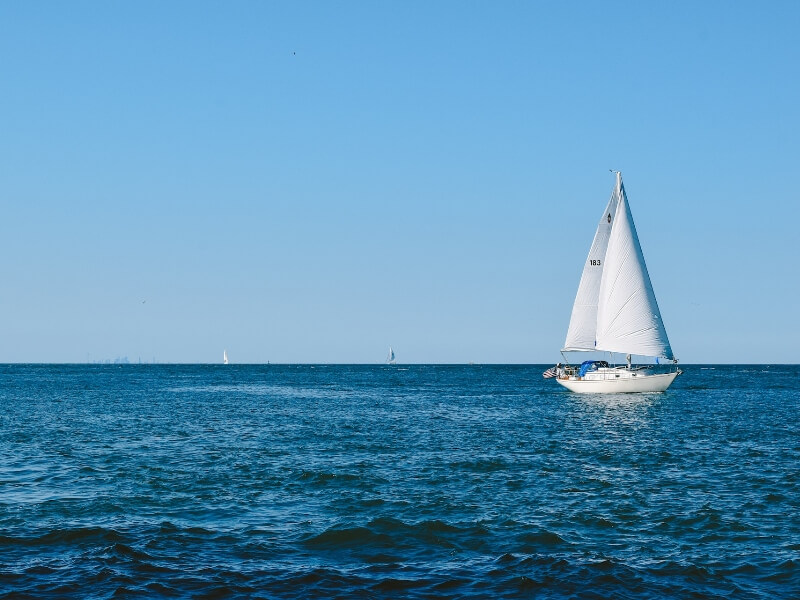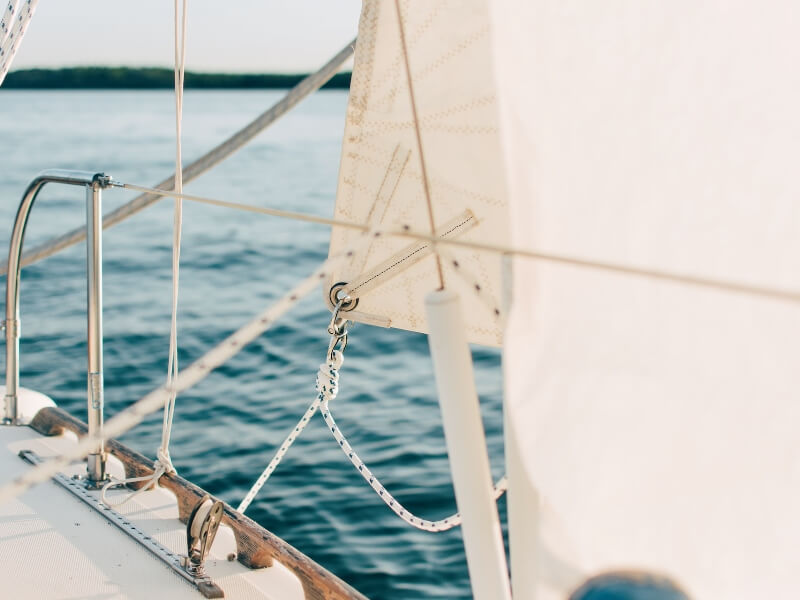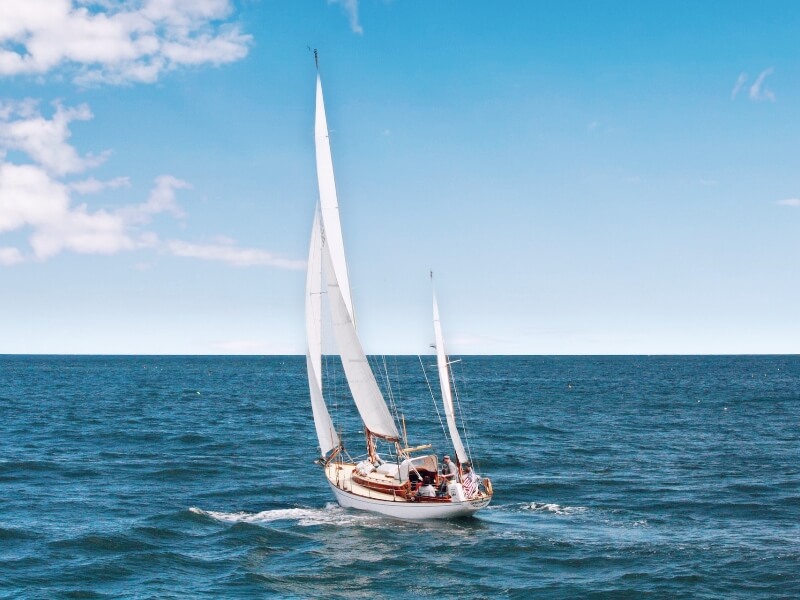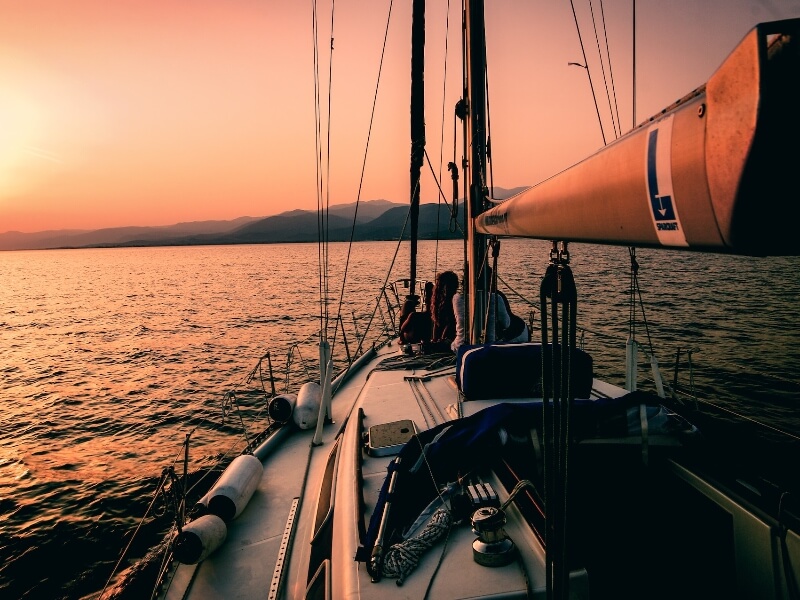In the event of a global emergency, having a private off-the-grid refuge will significantly improve your chances of survival. What if it’s a boat on a lake or ocean instead of a traditional shelter in the woods or mountains?
Is living on a boat a realistic option during a SHTF scenario?
Pros and Cons of Living on a Boat
Living on a boat is a viable option during a SHTF scenario, assuming it doesn’t involve tsunamis or hurricanes. Here are the pros and cons of living off-grid on a boat.

PRO: Mobility
The greatest advantage of living on a boat is mobility. All your food stores and other supplies are ready for transport at a moment’s notice. If your current location becomes inhospitable, you can immediately move to safer waters and avoid running into other people.
Mobility would be especially advantageous in two particular SHTF scenarios — a pandemic and a fuel crisis. In the event of a pandemic, you need to isolate yourself and steer clear of infected areas. Living on a boat is a perfect solution.
You can still travel with a sailboat or man-powered boats like canoes and kayaks during a fuel crisis. Your main residence can’t be something that small, but it can be a secondary vessel if your motorized boat runs low on fuel. A canoe or kayak is a perfect way to stealthily return to shore when you need to resupply.
CON: Lots of Maintenance

Although boats provide great mobility, they can come with a steep price tag. Boats often require lots of maintenance. Some essential tasks include painting the hull, cleaning the deck, replacing broken or worn-down parts, and monitoring engine health. Annual upkeep typically costs about 10% of the overall cost.
Maintenance expenses would be the last thing on your mind during a SHTF scenario. An engine breakdown or broken rudder could be a life-threatening situation. It takes just one mechanical failure to make you immobile and vulnerable. Worst of all, it might leave you stranded in the middle of a large body of water.
PRO: Easy Access to Food and Water
Living on a boat gives you easy access to food and water. Fishing is a great way to get ample protein with minimal effort and without traveling long distances. You could also trap shellfish, hunt for waterfowl or scour the shoreline for edible plants. Wherever there’s a large body of water, food is always nearby.
As for water, you can utilize various filtration methods including boiling, pumps and purification tablets to make saltwater safe to drink. The only problem that might arise is permanent contamination from chemical or nuclear warfare. In that case, you would have to relocate to uncontaminated waters or return to land.
CON: More Immediate Threats
Although a boat gives you near-constant access to food and water, it can also come with more immediate threats. First of all, you’re always exposed. There’s nowhere to hide when you’re surrounded by water. Without the proper defenses, you are a sitting duck for hostile vessels.
You are also more exposed to the elements. A thunderstorm isn’t a big deal on a homestead, but it could capsize your boat. That’s why you should stay close to the shoreline. If you need to make a quick getaway from natural or human threats, land is never far away.
Creating the Ideal Bugout Boat
The pros and cons of living on a boat during a SHTF scenario are difficult to compare in a vacuum. In most cases, choosing the right vessel will help you determine whether you can survive on the water when SHTF. Here are some tips for finding and creating an ideal boat.
1. Opt for a Sailboat

Sailboats are the best options for a bugout boat for several reasons. First of all, you don’t need to worry about gasoline. That advantage solves the problem of fuel scarcity. Second, maintenance is much easier because there’s no engine, motor or propellers. You just have to focus on keeping the hull and sails in good condition.
You can also move in silence. Motorboats have loud engines that can be heard for miles around. A sailboat is sleek and stealthy, even the bigger ones. Look for models that are at least 40 feet long so you have enough indoor space for storage and refuge from bad weather.
2. Make Additional Safety Modifications
After buying a good sailboat, you should start making additional safety modifications. Put obstacles around the sides of the boat so people can’t climb on board. Turn the crow’s nest into a sniping station for hunting and warding off intruders. Install a keel guard to protect the vessel from rocks and shallow reefs.
Another essential modification is creating your own power source. Invest in marine solar panels or canopies so there’s always electricity for your appliances. Be sure to install them where they won’t suffer corrosion from saltwater.
3. Have Multiple Lines of Communication
A reliable power source is also important because your boat needs multiple lines of communication. Your cellphone will be useless in a SHTF scenario, and satellite communication might also be down. You need to get a VHF marine radio or a HAM radio to interact with allied vessels or people near the shoreline.

Boats Are Viable Options, but They’re Not for Everyone
Living on a boat is certainly a realistic option during a SHTF scenario, but it’s not suitable for everyone. They come with a whole new set of challenges, including near-constant maintenance and unique environmental threats. If you want to take the naval route, you must choose the right vessel and modify it for survival.
=====
Become a Survival Dispatch Insider …
We bring together survival enthusiasts and preppers to share skills and knowledge, so you can enhance your preparedness for emergencies and ensure the safety of you and your community.
The Results You’ll Get …
Our community, courses, and memberships are pretty special. We’re focused on the ways it will make a huge difference in your life.
Here are a few of the things you’ll be able to do as a member of Survival Dispatch Insider …
1) Improve your emergency preparedness by learning survival skills and strategies from experienced preppers.
2) Build lasting connections with like-minded individuals that share your passion for safety and readiness.
3) Access a wealth of knowledge and resources to assist in protecting you and your community during unexpected situations.
Click HERE to get started.
=====
